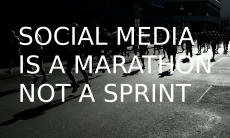Business marketers have much to gain from retention marketing. Business customers tend to be fewer and more valuable—meaning you can’t afford to lose even one. But how do you keep your customers active and buying from you, versus the competition? How do you prevent defection? Let’s look at the traditional approaches to retention marketing in B2B, plus some new developments in loyalty marketing being adopted by B2B marketers today, including social media and gamification.
Traditional approaches in B2B retention marketing
Given the importance of customer retention in B2B, business marketers have a long history of investing in loyalty drivers. The most basic approach has been—simply—superb account management.
In a well-run company, the sales team in charge of any given customer will do its best to understand what’s going on in the account, sell to them the way they want to buy, deliver on time, develop new products to serve their evolving needs, solve any customer service problems, cultivate deep relationships with the specifiers, influencers and decision-makers throughout the account, and generally provide the best possible products and service levels. It is this basic approach that has stood the test of time in account development.
But as buying has become more complex, businesses have developed additional strategies to deepen customer relationships and engender loyalty. For example:
Data-driven segmentation and differentiated treatment. Not all customers are created equal, so segmenting customers by value and treating them differently is a strategy that works well in business markets. Some companies will identify their top accounts—based on margin or on topline revenue—and provide them with special perks, pricing and service levels, such as:
- Corporate-wide purchasing agreements, where all buying across a far-flung enterprise can benefit from pre-negotiated contract pricing.
- Dedicated sales teams, some of them even housed on site at the customer’s operation.
- Dedicated customer service phone lines, where the service personnel can develop an ongoing personal relationship with individuals in the account.
- Special status, like Gold Customer, or Preferred Customer, programs that may include access to discounts, free shipping, invitations to events and other perquisites.
Incentive programs. Taking a page from the consumer world, some business marketers have found success with frequency marketing programs that reward customers for certain behaviors, such as repeat purchase. These programs are not universally applicable in business, but they have their place, particularly when the purchase cycle is short and purchase behavior can be tracked.
Rewards programs are typically applied in businesses that mimic consumer purchasing behavior, like office supplies. Staples, for example, runs a thriving Business Rewards program targeted to its small-medium business customers. Financial services and telecom have also done well with frequency marketing programs in SMB, examples being American Express OPEN, the MasterCard Business Bonus program, and Verizon’s BusinessLink.
New developments in loyalty for business markets
In the last few years, B2B loyalty marketing has benefited from the arrival of new tools that support the goal of deepening relationships with business buyers. Social media, for example, has created an easy, low-cost way for companies to build communities and foster engagement. Social media is being applied across the B2B marketing spectrum, from prospecting via viral pass-along, to enhancing customer relationships, to surfacing and solving customer service problems.
In the area of enhancing customer relationships and fostering loyalty, to the power of social media is being felt throughout the B2B marketing world:
- Companies build the ranks of their followers on Twitter and LinkedIn, their “likes” on Facebook, and their RSS subscribers to blogs and YouTube channels. These connections then become another set of media channels for staying in touch, introducing new products, sharing ideas and case studies, and otherwise building an ongoing relationship.
- Within social media environments, companies establish communities of customers and prospects around certain subjects, like technologies, products, events, and other shared interests. In these forums, chat groups, blogs and other formats, like-minded people share ideas, expand their knowledge and make valuable connections.
One of the most exciting new developments in B2B loyalty marketing is the new concept known as gamification. The idea here is to build on people’s natural enthusiasm for games, involving prizes, competition and recognition, and turn that motivation into a loyalty driver. The goal of gamification is to add gaming elements to otherwise boring processes and tasks, converting them into something fun, competitive and addictively engaging.
Marketers who want to introduce game design and mechanics to their loyalty programs can now take advantage of several new software platforms, like Badgeville, CallidusCloud, and Bunchball. These tools are taking loyalty programs to a new level of interactivity, real-time feedback and social interaction, with some promising early results.
If you’ve experimented with loyalty programs in B2B, please share your experiences.






